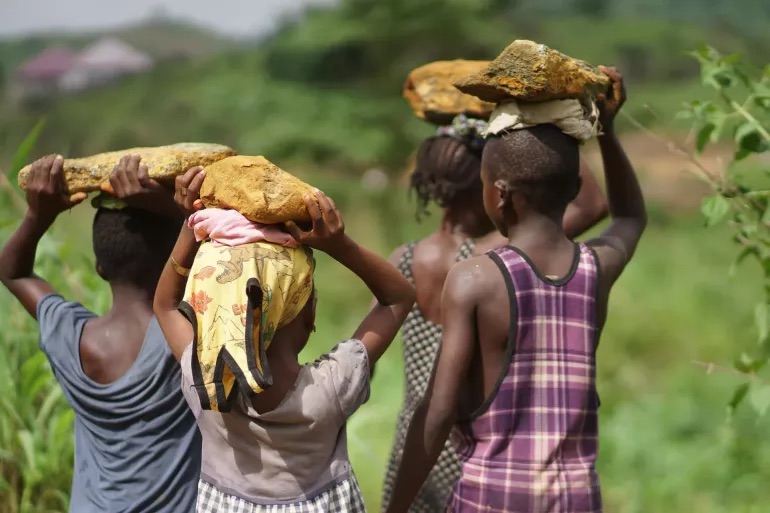By Bimbola Oyesola
As the world celebrates International Day Against Child Labour, statistics have shown that nearly 138 million children are engaged in child labour in 2024, including about 54 million in hazardous work likely to jeopardise their health, safety or development.
A new report released yesterday by the ILO and UNICEF at the ongoing 113 International Labour Conference (ILC) in Geneva, Switzerland, said almost 50 percent reduction was recorded since the start of the century, but the world failed to reach elimination targets.
The latest data shows a total reduction of over 22 million children since 2020, reversing an alarming spike between 2016 and 2020. Despite this positive trend, the world has missed its target of eliminating child labour by 2025.
Stakeholders noted that the report, titled, ‘Child Labour: Global estimates 2024, trends and the road forward,’ released one day ahead of the World Day Against Child Labour and on International Day of Play, underscores a stark reality that while gains have been made, millions of children are still being denied their right to learn, play and simply be children.
“The findings of our report offer hope and show that progress is possible. Children belong in school, not in work. Parents must themselves be supported and have access to decent work so that they can afford to ensure that their children are in classrooms and not selling things in markets or working in family farms to help support their family. But, we must not be blindsided, we still have a long way to go before we achieve our goal of eliminating child labour,” said the ILO’s Director-General, Gilbert F. Houngbo.
According to the data, agriculture remains the largest sector for child labour, accounting for 61 percent of all cases, followed by services (27 percent), like domestic work and selling goods in markets and industry (13 percent), including mining and manufacturing.
Asia and the Pacific achieved the most significant reduction in prevalence since 2020, with the child labour rate dropping from 5.6 percent to 3.1 percent (from 49 million to 28 million children). Latin America and the Caribbean achieved an eight percent relative reduction in prevalence and an 11 percent decline in total numbers, the report notes.
Sub-Saharan Africa continues to carry the heaviest burden, accounting for nearly two-thirds of all children in child labour, around 87 million. While prevalence fell from 23.9 to 21.5 percent, the total number has remained stagnant against the backdrop of population growth.
“The world has made significant progress in reducing the number of children forced into labour. Yet far too many children continue to toil in mines, factories or fields, often doing hazardous work to survive,” said Catherine Russell, UNICEF’s Executive Director. “We know that progress towards ending child labour is possible by applying legal safeguards, expanded social protection, investment in free, quality education and better access to decent work for adults. Global funding cuts threaten to roll back hard-earned gains. We must recommit to ensuring that children are in classrooms and playgrounds, not at work.”
The ILO emphasised that Child labour compromises children’s education, limits their rights and their future opportunities, and puts them at risk of physical and mental harm. It is also a consequence of poverty and lack of access to quality education, pushing families to send their children to work and perpetuating inter-generational cycles of deprivation.
The report noted that boys are more likely than girls to be involved in child labour at every age, but when unpaid household chores of 21 hours or more per week are included, the gender gap reverses, the report noted.
Since 2000, child labour has almost halved, from 246 million to 138 million, yet current rates remain too slow, and the world has fallen short of reaching the 2025 global elimination target. To end it within the next five years, current rates of progress would need to be 11 times faster.
To accelerate progress, UNICEF and ILO are calling on governments to “invest in social protection for vulnerable households, including social safety nets, such as universal child benefits, so families do not resort to child labour.
“Strengthen child protection systems to identify, prevent and respond to children at risk, especially those facing the worst forms of child labour.
Provide universal access to quality education, especially in rural and crisis-affected areas, so every child can learn.
“Ensure decent work for adults and youth, including workers’ rights to organise and defend their interests. Enforce laws and business accountability to end exploitation and protect children across supply chains.”


















Leave a comment